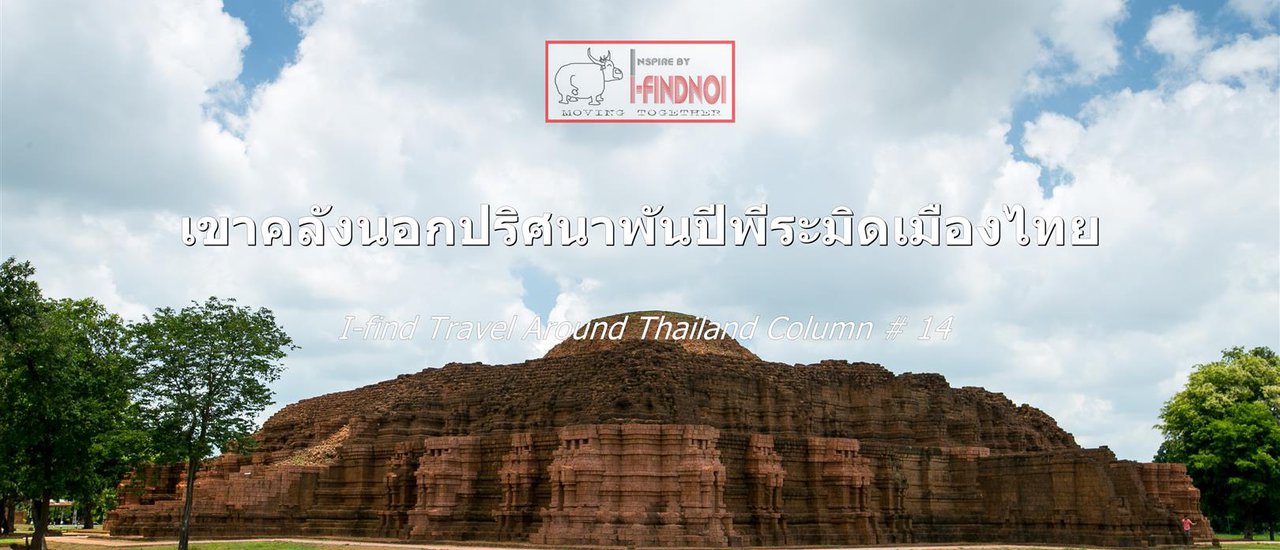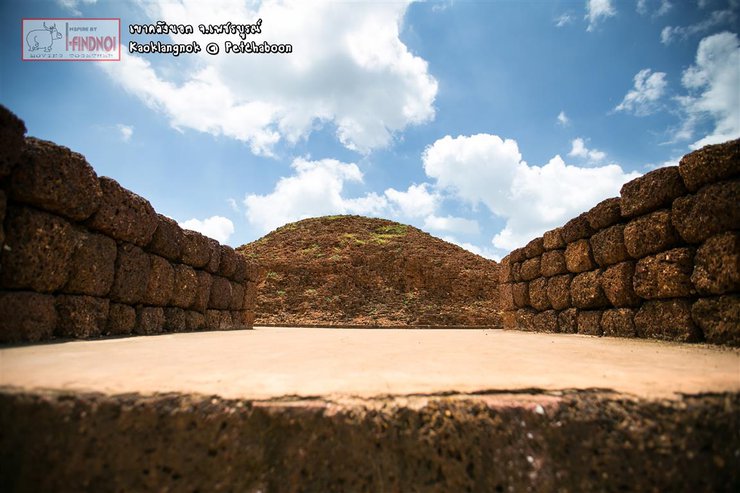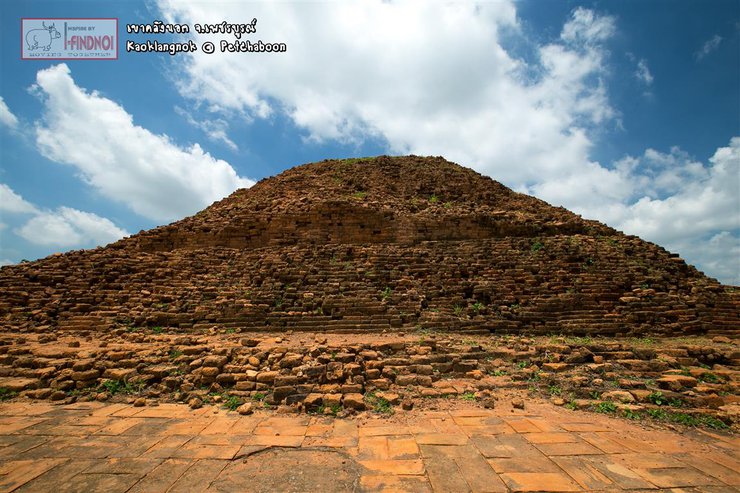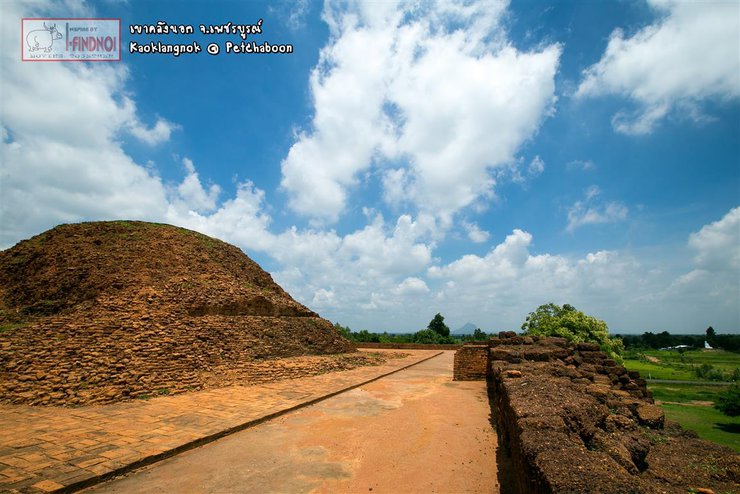
When it comes to pyramids, many people think of Egypt.
They imagine images of Arabs riding camels in a row in the middle of the desert,
with the Great Pyramid of Giza, one of the seven wonders of the world, as a backdrop.
But in reality, pyramids are not only found in Egypt, but are scattered across various continents around the world.
They can be found in America, Africa, the Middle East, China, Indonesia,
and even in our neighboring country, Cambodia!
However, the story of the pyramids is perhaps nowhere as interesting as the "Thai Pyramid".
My eyes lit up when I read an article on a website. At first, I thought it might be the Phra Nang Ruea Lom Pyramid,
which King Rama V ordered to be built as a memorial to his love for Queen Sunandha Kumariratana,
at Pliew Waterfall in Chanthaburi Province.
But no! Because the pyramid mentioned is an ancient site that is thousands of years old!
It is said to be larger and older than the Koh Ker pyramid in Cambodia!
So, does the Thai pyramid really exist?
The journey to unravel the mystery and find the answer begins. I gathered the information I could find and headed north,
following the clues of an ancient city called "Sri Thep", a city older than Thai history.
It predates the founding of Sukhothai as the capital, during the era when Dvaravati civilization flourished,
between the 11th and 18th Buddhist centuries. It is now located in the Sri Thep Historical Park, Sri Thep District, Phetchabun Province.
Many people are familiar with this historical park,
but how many people know that there is a structure here that is said to be a "pyramid" hidden away!!
About 240 kilometers from Bangkok, I arrived at the entrance to Sri Thep City.
But instead of turning in, I drove further north on a small asphalt road for about 2 kilometers.
The sight in front of me, at the bend on the left-hand side, left me in awe of the grandeur of the ancient site,
which was built of massive laterite stones that must have been about 20 meters high from the ground to the top.
And according to the information I had studied beforehand, the base is said to be 64 meters wide!

This ancient monument resembles a pyramid with stairs on all four sides.
Although what is visible does not appear to be the pyramid shape as depicted, only the lower half of the base is visible.
The upper half of the triangle is missing, which is likely to have collapsed over time.
This is because there are piles of bricks on top.

I stepped out of the car into a serene atmosphere. This place seemed relatively unknown.
A friendly officer approached me with a smile and gave me a brief overview of the site.
"Sri Tep was originally a Mon city that adopted Indian culture and practiced Theravada Buddhism," he explained.
"Later, when the Khmers took control, the architecture began to reflect a blend of Dvaravati and Khmer styles."

"This ancient site is known by the locals as Khao Khlang Nok. Before its excavation, it was a large earthen mound covered by trees. There were signs of illegal excavations, with deep holes dug into the mound. It is believed that this site was once used to store treasures or weapons during that era."

Upon investigation by the Fine Arts Department, the internal structure was discovered and the accumulated soil was excavated.
It turned out to be an archaeological site in a relatively complete condition and larger than other contemporary archaeological sites.
This is unprecedented in Thailand.

"“That's amazing," I said to the old man before thanking him and excusing myself to explore the surroundings.
I walked around to the stairs on the west side, as it was the only one of the four sides that could reach the top floor."



The top is a wide platform offering panoramic views. In the center, there are large piles of broken bricks.
Initially, I thought it might be the remains of a collapsed pyramid, but my uncle told me it was the ruins of an ancient stupa.
Therefore, Khlang Nok is not a pyramid as previously understood, but rather a large stupa situated on a massive base.
It was used for religious ceremonies and was constructed around the 13th-14th centuries CE.
It fell into disrepair along with the city of Sri Thep in the early 18th century CE.



The mystery has now been solved. The Khlang Nok is not a pyramid.
However, this does not diminish its value or significance. Regardless of what this ancient site may be,
it remains a national heritage, a historical landmark that all Thais should preserve for the nation's future.
As His Majesty King Bhumibol Adulyadej once said,
“The construction of a building today may be an honor for the individual builder,
but ancient sites are a national honor. Even a single old brick is worth preserving.
If we lose Sukhothai, Ayutthaya, and Bangkok, Thailand will have no meaning.”
(Royal Address at Phra Thinang Yen, Phra Nakhon Si Ayutthaya Province, December 26, 1961)



Image source: Simulated model of Khao Klang Nok, courtesy of Prof. Dr. Santi Leksukhum, Faculty of Archaeology, Silpakorn University (Department of Fine Arts website).

Route to Khao Khlang Nok from Bangkok
From Bangkok:
- Take Highway 1 towards Saraburi Province.
- Before reaching Saraburi city, turn left onto Bypass Road 362, following signs for Lopburi Province.
- Continue straight until you reach the Phu Khae intersection.
- Turn left at the intersection for Lopburi Province.
- Turn right onto Highway 21.
- Continue towards Phetchabun Province.

Approximately 100 kilometers from the Phu Khae intersection, you will reach the Sri Thep district. Turn right onto Highway 2119.
Continue straight for about 10 kilometers, following the signs for Sri Thep Historical Park.

Once you reach the entrance of the park, continue driving a short distance until you see the sign for Khao Klang Nok.
Turn left and follow the signs for approximately 2 kilometers. Khao Klang Nok will be on your left.


Follow other works of I Find at http://www.bloggang.com/mainblog.php?id=ifind
I-FINDNOI
Friday, October 4, 2024 3:00 PM















